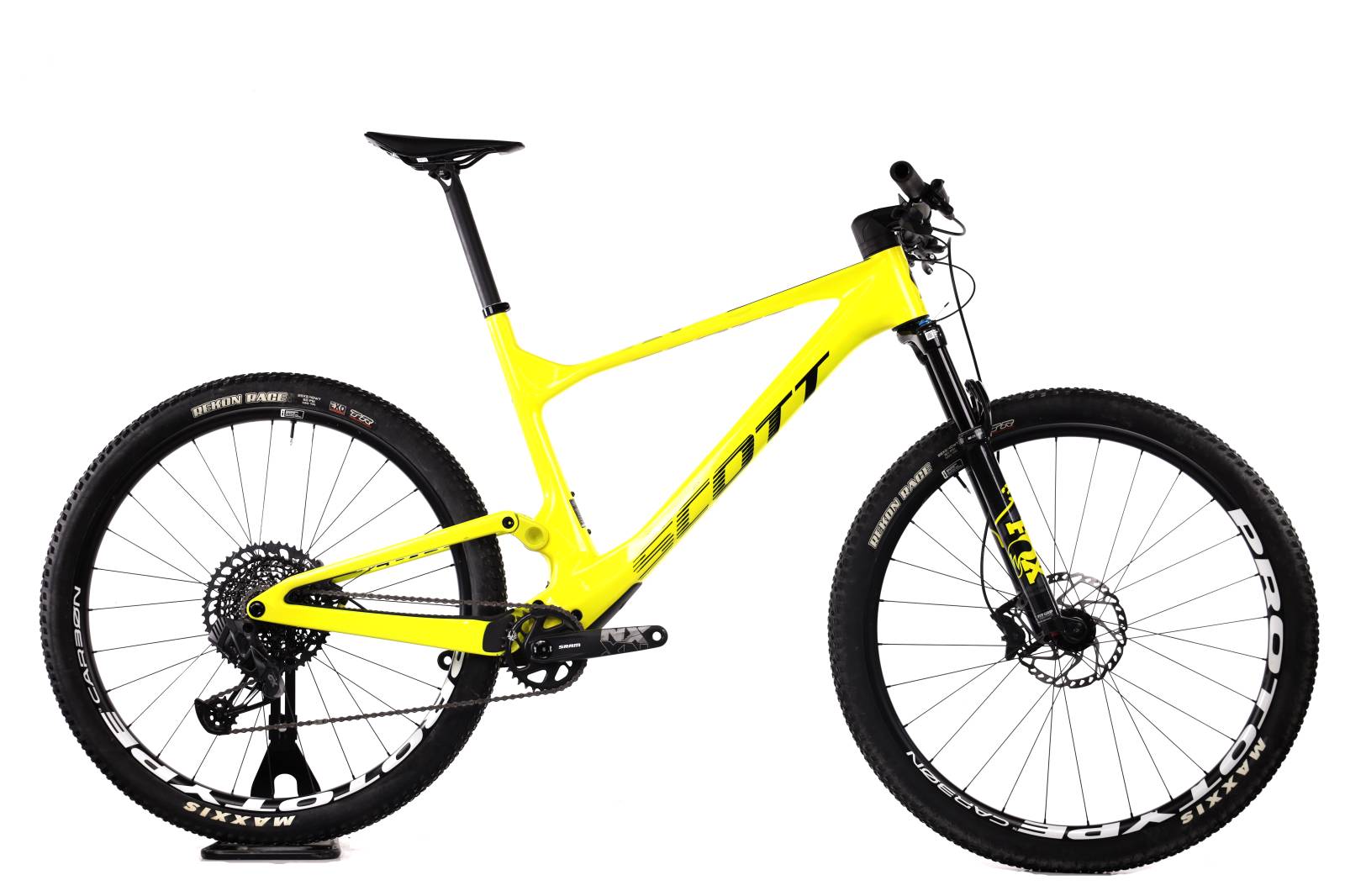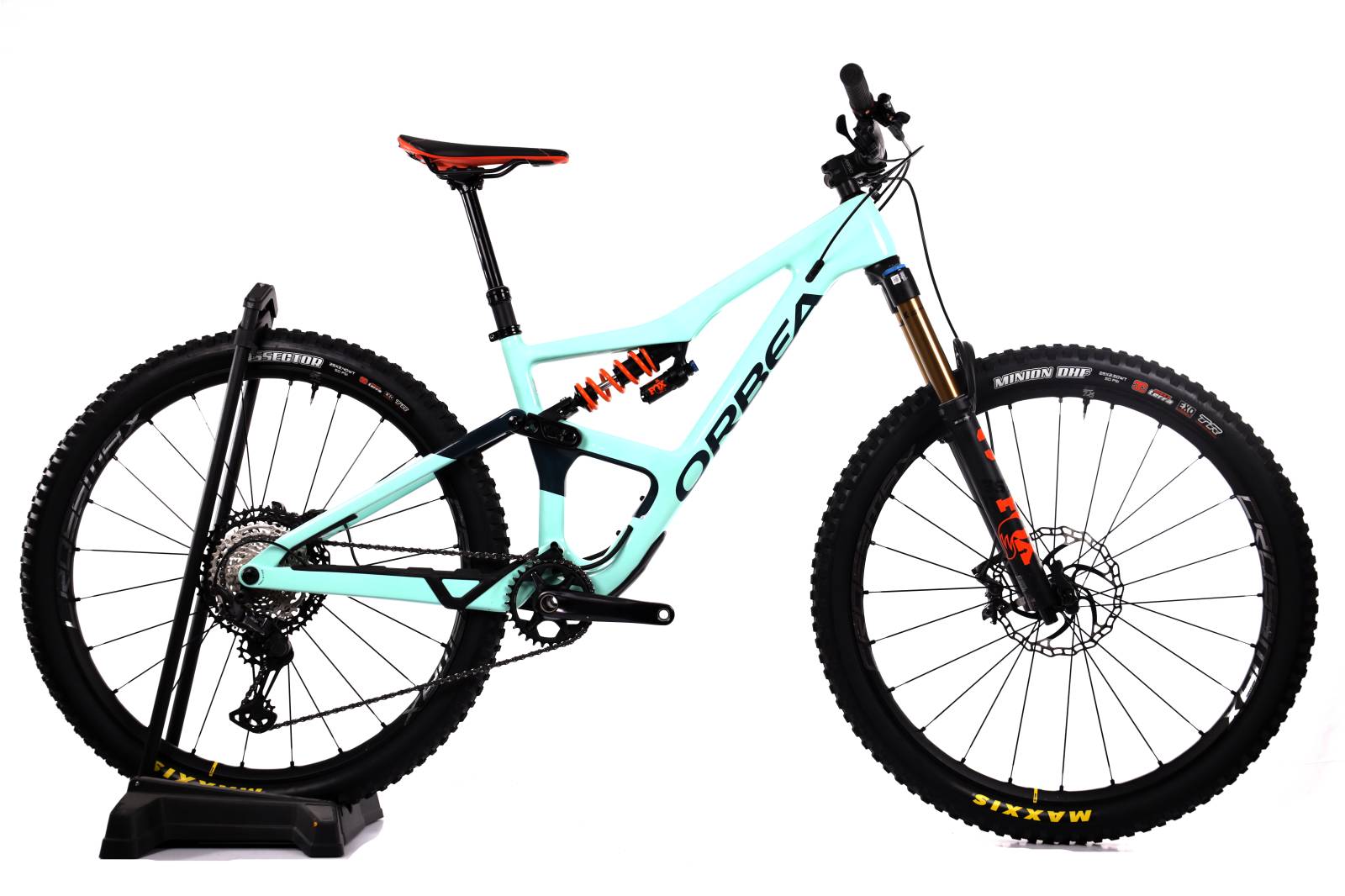When talking about the different types of suspension in mountain bikes, we generally refer to two main categories: bikes with front suspension and bikes with full suspension. However, in this latter category, it's important to know that not all rear shocks are the same. In this article, we're going to tackle a topic that many of us find confusing. After some personal experiences and many hours of study, I will try to summarize the basic information we need to know about rear suspension systems in mountain bikes. This way, it will be easier for us to know which of these systems is the most suitable for each type of mountain biking.
👉 Vertical shock vs. horizontal shock, which is better?
Types of mountain biking and suspension travel
2020/03/mtb-doble-suspensión-1.jpg"> Not all types and geometries of bikes are the same within mountain biking. Depending on the terrain type, speed, climbs, descents, etc., each discipline is associated with a different suspension travel. Suspension travel is the depth in millimeters that the bars of the front fork and the rear shock can compress or extend to absorb the irregularities of the terrain. The greater the travel, the greater the shock absorption capacity.
👉 Guide to understanding the different types of mountain biking
Rally and Cross Country (XC) Bikes

This type of bike is used to compete in explosive races and circuits with continuous short but steep climbs and descents. Pedaling and braking efficiency is everything. Suspension travel on rally and cross country bikes is generally short, around 100 mm. In this discipline, it is also common to see bikers racing on soft-tail or hardtail (semi-rigid) bikes.
👉 See mountain bikes for Cross Country
Marathon (XCM) and Trail Bikes

This type of race is usually longer, sometimes even spanning several stages. They take place on longer courses and less technical terrain. XCM is the most practiced discipline. These are routes of more than 50 kilometers where the climbs and descents do not require high performance in pedaling and braking, but instead prioritize comfort. Furthermore, if we are talking about stage races, this factor becomes even more important. The suspension travel in this type of bike is usually 120 mm, which nowadays we refer to as trail bikes.
👉 See mountain bikes for Trail
Enduro Bikes

Enduro is practiced by riding very aggressive descents where, although pedaling is not eliminated, priority is given to adaptability to the terrain and absorption of irregularities by the suspension system. These are very technical routes on trails where you have to navigate rocks, roots, logs, and other elements. Suspension travel is usually around 160 millimeters.
👉 See mountain bikes for Enduro
Downhill Bikes

In downhill, or downhill, pedaling takes a back seat. This discipline consists of speeding downhill, jumping and dodging obstacles, which is why a high capacity to absorb impacts, bumps, etc. is needed. The suspensions on these types of bikes reach up to 180 mm.
👉 See mountain bikes for Downhill
Types of suspensions according to cycling discipline
2020/03/mtb-enduro-1.jpg"> Depending on the type of cycling you are going to practice, it will be advisable to buy a bike with one type of suspension or another. Based on which wheel the suspension acts on, we can classify mountain bikes as follows.
Hardtail
Also known as semi-rigid - although in Spain most people simply call them rigid. They only have front suspension. They are used for Cross Country and Rally races.
Softail
In addition to the front suspension, they include a rear suspension system that gives us a small amount of cushioning, about 30 millimeters. The most famous system today is that of the famous Trek Procaliber or the BMC TeamElite. In these suspension systems, the rear triangle (the swingarm) is given a pivot point and connection to the frame, creating a false sensation of suspension. In reality, for disciplines like XC, it is a great advancement.
Full Suspension
Here we are talking about bikes with a double suspension system. Apart from the front fork, they also have a shock absorber that acts on the rear wheel. Depending on the type of bike and the cycling discipline it is designed for, the suspension travel both front and rear ranges between 100 mm and 180 mm. In some cases, such as extreme downhill bikes, it exceeds 200 mm.
Types of damping in full suspension
Within full suspension bikes , known in Spain as "double suspension", there are several types of rear suspension. Depending on the system used, they can generate more or less contamination in pedaling, braking, and the rider's comfort during the ride. The types of rear shock absorbers on double suspension bikes are the following:
Virtual Pivot Point (VPP)

The rear suspension system Giant Maestro from the Giant Reign is a virtual pivot type. The use of two linkage rods attached to the frame creates a sense of intelligence in the bike that is effective in both pedaling and braking. The lower linkage, anchored to the bottom bracket area, exerts a force opposite and similar in magnitude to that of the suspension when the rider pedals or brakes. In this way, the suspension stiffens during pedaling and braking, and softens when no force is applied to the pedals. Thus, we manage to eliminate much of the contamination in pedaling and braking, providing great comfort when descending technical sections. As disadvantages, we can mention that it is a system that requires a lot of maintenance and adds weight to the bike, since it uses two linkages.
Single Pivot
The Orbea Occam uses a single pivot suspension system. The rider's feeling when using these suspensions is that it becomes softer as the travel is used up. It is a simple and lightweight system, as it only has one set of bearings. The downside is that it contaminates pedaling and braking more than other types of suspensions. This is because the swingarm pivots with respect to the frame at a single articulation point, so the forces and moments the swingarm experiences are partially transmitted to the frame.
Articulated Single Pivot
2020/03/Monopivote-articulado-Commencal-1.jpg"> We are talking about a hybrid system between the virtual pivot and the single pivot. In this case, we have a shock absorber with a linkage system that manages to eliminate much of the contamination from pedaling and braking, managing the progression of the shock absorber throughout its travel. In this elimination of contamination, how and where the shock absorber is placed has a huge influence.
Horst Link
This type of shock offers progressive suspension that stiffens as it reaches the end of its travel. On the positive side, it should be noted that contamination in pedaling and braking is very low, thanks to the fact that there is a pivot point on the chainstay, thus breaking the transmission of forces from the swingarm and giving the rear wheel independence. The main disadvantage would be the maintenance and weight of the bike, as we are dealing with a more complex rear suspension system based on more articulation points and elements.
Floating Suspension
2020/03/Fox-Float-1.jpg"> This suspension system is quite unique, since the shock absorber does not have any connection with the frame, but is instead attached to the swingarm by two linkages. In this way, it can be activated from both above and below, absorbing both pedaling forces and irregularities in the terrain. It is widely used in enduro bikes, and its operation is very smooth and progressive. As for its disadvantages, we are talking about a heavier type of bike with more maintenance compared to other suspension systems, such as the virtual single pivot.
Other suspension systems
There are other, more complex systems designed for extreme disciplines, such as downhill or enduro. These include Active Breaking Pivot (or split pivot) shocks, the new Fox Switch used by American Yeti bikes, or the AOS from GT, which is a mix between the single pivot and the horst link. To conclude, I would say that there are almost as many types of rear suspensions as there are types of cyclists, so before buying a full suspension bike it is better to get informed and, if possible, try out the bike you choose before purchasing. A suspension that causes a high degree of pedaling contamination does not seem the most suitable for XC or XCM. And one with progressive stiffening like the horst link should not be chosen for downhill riding. And you, what type of suspension do you think is best for the average cyclist? Leave your opinion in the comments.
